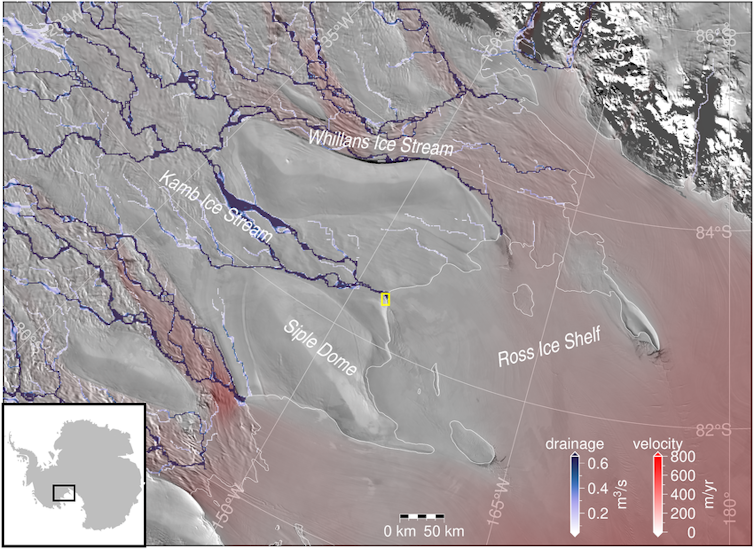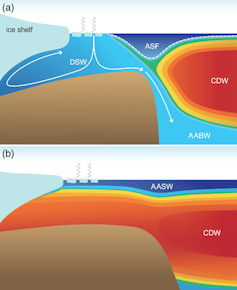Science
Even without concussion, athletes in contact sports may have brain changes – Medical Xpress

Female college rugby players may have subtle brain changes even if they haven’t had a recent concussion, according to a new study published in the June 17, 2020, online issue of Neurology, the medical journal of the American Academy of Neurology. The study compared rugby players to other female college athletes competing in the non-contact sports of swimming and rowing.
“There’s no longer a debate that when an athlete is diagnosed with a concussion caused by a sharp blow or a fall, there is a chance it may contribute to brain changes that could either be temporary or permanent,” said study author Ravi S. Menon, Ph.D., FRSC, of Western University in London, Canada. “But what are the effects of the smaller jolts and impacts that come with playing a contact sport? Our study found they may lead to subtle changes in the brains of otherwise healthy, symptom-free athletes.”
The study involved 101 female college athletes, including 70 who played rugby and 31 who participated in either rowing or swimming. A subset of rugby players were followed for at least two years. Swimmers and rowers were followed for one year.
All athletes were concussion-free six months prior to the start of the study and during the study as well, however some rugby players had a concussion history before the six-month period while non-contact athletes had experienced none.
Some of the athletes wore devices to record head impacts, including 37 rugby players and nine rowers. Measurements from the devices found that while rowers did not experience any impacts, 70% of the rugby players experienced an average of three impacts during two practices and one pre-season game.
“While we only looked at these impacts during a few events during the season, previous research has shown these kinds of subclinical impacts may accumulate over years of participation in contact sports,” said Menon.
Researchers used magnetic resonance imaging (MRI) to scan the brains of all the athletes during in- and off-season play. With the brain scans, researchers examined how water molecules moved throughout the white matter to determine if there were microstructural brain changes. They also investigated how different areas of the brain communicated with each other and whether there were any changes in how those areas worked together.
In rugby players, researchers found changes in the microstructure of the white matter, including in nerve fibers that connect areas of the brain that control basic emotions like fear, pleasure and anger. In some of the rugby players, the changes progressed over time. Researchers did not find changes in the brains of swimmers or rowers.
Researchers also found that for rugby players only, the microstructure of the brain changed between in- and off-seasons, specifically in the brain stem, which controls the flow of messages between the brain and body.
Researchers found differences in the functional organization of the brain too. When compared to swimmers and rowers, rugby players had changes in connectivity—how the brain communicates—between the areas of the brain that control memory retrieval and visual processing.
“Even with no concussions, the repetitive impacts experienced by the rugby players clearly had effects on the brain,” said Menon. “More research is needed to understand what these changes may mean and to what extent they reflect how the brain compensates for the injuries, repairs itself or degenerates so we can better understand the long-term health effects of playing a contact sport.”
A limitation of the study was that while the rugby athletes did not experience a diagnosed concussion, there may have been undiagnosed concussions that went unnoticed by the coaching staff or undetected by relatively insensitive clinical tools.
Citation:
Even without concussion, athletes in contact sports may have brain changes (2020, June 17)
retrieved 18 June 2020
from https://medicalxpress.com/news/2020-06-concussion-athletes-contact-sports-brain.html
This document is subject to copyright. Apart from any fair dealing for the purpose of private study or research, no
part may be reproduced without the written permission. The content is provided for information purposes only.
Science
"Hi, It's Me": NASA's Voyager 1 Phones Home From 15 Billion Miles Away – NDTV


<!–
Launched in 1977, Voyager 1 was mankind’s first spacecraft to enter the interstellar medium
Washington, United States:
NASA’s Voyager 1 probe — the most distant man-made object in the universe — is returning usable information to ground control following months of spouting gibberish, the US space agency announced Monday.
The spaceship stopped sending readable data back to Earth on November 14, 2023, even though controllers could tell it was still receiving their commands.
In March, teams working at NASA’s Jet Propulsion Laboratory discovered that a single malfunctioning chip was to blame, and devised a clever coding fix that worked within the tight memory constraints of its 46-year-old computer system.
window._rrCode = window._rrCode || [];_rrCode.push(function() (function(v,d,o,ai)ai=d.createElement(“script”);ai.defer=true;ai.async=true;ai.src=v.location.protocol+o;d.head.appendChild(ai);)(window, document, “//a.vdo.ai/core/v-ndtv/vdo.ai.js”); );
“Voyager 1 spacecraft is returning usable data about the health and status of its onboard engineering systems,” the agency said.
Hi, it’s me. – V1 https://t.co/jgGFBfxIOe
— NASA Voyager (@NASAVoyager) April 22, 2024
“The next step is to enable the spacecraft to begin returning science data again.”
Launched in 1977, Voyager 1 was mankind’s first spacecraft to enter the interstellar medium, in 2012, and is currently more than 15 billion miles from Earth. Messages sent from Earth take about 22.5 hours to reach the spacecraft.
Its twin, Voyager 2, also left the solar system in 2018.
Both Voyager spacecraft carry “Golden Records” — 12-inch, gold-plated copper disks intended to convey the story of our world to extraterrestrials.
These include a map of our solar system, a piece of uranium that serves as a radioactive clock allowing recipients to date the spaceship’s launch, and symbolic instructions that convey how to play the record.
The contents of the record, selected for NASA by a committee chaired by legendary astronomer Carl Sagan, include encoded images of life on Earth, as well as music and sounds that can be played using an included stylus.
window._rrCode = window._rrCode || [];_rrCode.push(function(){ (function(d,t) var s=d.createElement(t); var s1=d.createElement(t); if (d.getElementById(‘jsw-init’)) return; s.setAttribute(‘id’,’jsw-init’); s.setAttribute(‘src’,’https://www.jiosaavn.com/embed/_s/embed.js?ver=’+Date.now()); s.onload=function()document.getElementById(‘jads’).style.display=’block’;s1.appendChild(d.createTextNode(‘JioSaavnEmbedWidget.init(a:”1″, q:”1″, embed_src:”https://www.jiosaavn.com/embed/playlist/85481065″,”dfp_medium” : “1”,partner_id: “ndtv”);’));d.body.appendChild(s1);; if (document.readyState === ‘complete’) d.body.appendChild(s); else if (document.readyState === ‘loading’) var interval = setInterval(function() if(document.readyState === ‘complete’) d.body.appendChild(s); clearInterval(interval); , 100); else window.onload = function() d.body.appendChild(s); ; )(document,’script’); });
Their power banks are expected to be depleted sometime after 2025. They will then continue to wander the Milky Way, potentially for eternity, in silence.
(Except for the headline, this story has not been edited by NDTV staff and is published from a syndicated feed.)
Science
West Antarctica's ice sheet was smaller thousands of years ago – here's why this matters today – The Conversation


As the climate warms and Antarctica’s glaciers and ice sheets melt, the resulting rise in sea level has the potential to displace hundreds of millions of people around the world by the end of this century.
A key uncertainty in how much and how fast the seas will rise lies in whether currently “stable” parts of the West Antarctic Ice Sheet can become “unstable”.
One such region is West Antarctica’s Siple Coast, where rivers of ice flow off the continent and drain into the ocean.
Journal of Geophysical Research, CC BY-SA
This ice flow is slowed down by the Ross Ice Shelf, a floating mass of ice nearly the size of Spain, which holds back the land-based ice. Compared to other ice shelves in West Antarctica, the Ross Ice Shelf has little melting at its base because the ocean below it is very cold.
Although this region has been stable during the past few decades, recent research suggest this was not always the case. Radiocarbon dating of sediments from beneath the ice sheet tells us that it retreated hundreds of kilometres some 7,000 years ago, and then advanced again to its present position within the last 2,000 years.
Figuring out why this happened can help us better predict how the ice sheet will change in the future. In our new research, we test two main hypotheses.
Read more:
What an ocean hidden under Antarctic ice reveals about our planet’s future climate
Testing scenarios
Scientists have considered two possible explanations for this past ice sheet retreat and advance. The first is related to Earth’s crust below the ice sheet.
As an ice sheet shrinks, the change in ice mass causes the Earth’s crust to slowly uplift in response. At the same time, and counterintuitively, the sea level drops near the ice because of a weakening of the gravitational attraction between the ice sheet and the ocean water.
As the ice sheet thinned and retreated since the last ice age, crustal uplift and the fall in sea level in the region may have re-grounded floating ice, causing ice sheet advance.

AGU, CC BY-SA
The other hypothesis is that the ice sheet behaviour may be due to changes in the ocean. When the surface of the ocean freezes, forming sea ice, it expels salt into the water layers below. This cold briny water is heavier and mixes deep into the ocean, including under the Ross Ice Shelf. This blocks warm ocean currents from melting the ice.

AGU, CC BY-SA
Seafloor sediments and ice cores tell us that this deep mixing was weaker in the past when the ice sheet was retreating. This means that warm ocean currents may have flowed underneath the ice shelf and melted the ice. Mixing increased when the ice sheet was advancing.
We test these two ideas with computer model simulations of ice sheet flow and Earth’s crustal and sea surface responses to changes in the ice sheet with varying ocean temperature.
Because the rate of crustal uplift depends on the viscosity (stickiness) of the underlying mantle, we ran simulations within ranges estimated for West Antarctica. A stickier mantle means slower crustal uplift as the ice sheet thins.
The simulations that best matched geological records had a stickier mantle and a warmer ocean as the ice sheet retreated. In these simulations, the ice sheet retreats more quickly as the ocean warms.
When the ocean cools, the simulated ice sheet readvances to its present-day position. This means that changes in ocean temperature best explain the past ice sheet behaviour, but the rate of crustal uplift also affects how sensitive the ice sheet is to the ocean.

Veronika Meduna, CC BY-SA
What this means for climate policy today
Much attention has been paid to recent studies that show glacial melting may be irreversible in some parts of West Antarctica, such as the Amundsen Sea embayment.
In the context of such studies, policy debates hinge on whether we should focus on adapting to rising seas rather than cutting greenhouse gas emissions. If the ice sheet is already melting, are we too late for mitigation?
Our study suggests it is premature to give up on mitigation.
Global climate models run under high-emissions scenarios show less sea ice formation and deep ocean mixing. This could lead to the same cold-to-warm ocean switch that caused extensive ice sheet retreat thousands of years ago.
For West Antarctica’s Siple Coast, it is better if we prevent this ocean warming from occurring in the first place, which is still possible if we choose a low-emissions future.
Science
NASA's Voyager 1 resumes sending engineering updates to Earth – Phys.org


For the first time since November, NASA’s Voyager 1 spacecraft is returning usable data about the health and status of its onboard engineering systems. The next step is to enable the spacecraft to begin returning science data again. The probe and its twin, Voyager 2, are the only spacecraft to ever fly in interstellar space (the space between stars).
Voyager 1 stopped sending readable science and engineering data back to Earth on Nov. 14, 2023, even though mission controllers could tell the spacecraft was still receiving their commands and otherwise operating normally. In March, the Voyager engineering team at NASA’s Jet Propulsion Laboratory in Southern California confirmed that the issue was tied to one of the spacecraft’s three onboard computers, called the flight data subsystem (FDS). The FDS is responsible for packaging the science and engineering data before it’s sent to Earth.
The team discovered that a single chip responsible for storing a portion of the FDS memory—including some of the FDS computer’s software code—isn’t working. The loss of that code rendered the science and engineering data unusable. Unable to repair the chip, the team decided to place the affected code elsewhere in the FDS memory. But no single location is large enough to hold the section of code in its entirety.
So they devised a plan to divide affected the code into sections and store those sections in different places in the FDS. To make this plan work, they also needed to adjust those code sections to ensure, for example, that they all still function as a whole. Any references to the location of that code in other parts of the FDS memory needed to be updated as well.


The team started by singling out the code responsible for packaging the spacecraft’s engineering data. They sent it to its new location in the FDS memory on April 18. A radio signal takes about 22.5 hours to reach Voyager 1, which is over 15 billion miles (24 billion kilometers) from Earth, and another 22.5 hours for a signal to come back to Earth. When the mission flight team heard back from the spacecraft on April 20, they saw that the modification had worked: For the first time in five months, they have been able to check the health and status of the spacecraft.
During the coming weeks, the team will relocate and adjust the other affected portions of the FDS software. These include the portions that will start returning science data.
Voyager 2 continues to operate normally. Launched over 46 years ago, the twin Voyager spacecraft are the longest-running and most distant spacecraft in history. Before the start of their interstellar exploration, both probes flew by Saturn and Jupiter, and Voyager 2 flew by Uranus and Neptune.
Provided by
NASA
Citation:
NASA’s Voyager 1 resumes sending engineering updates to Earth (2024, April 22)
retrieved 22 April 2024
from https://phys.org/news/2024-04-nasa-voyager-resumes-earth.html
This document is subject to copyright. Apart from any fair dealing for the purpose of private study or research, no
part may be reproduced without the written permission. The content is provided for information purposes only.
-
Business18 hours ago
Honda to build electric vehicles and battery plant in Ontario, sources say – Global News
-



 Science18 hours ago
Science18 hours agoWill We Know if TRAPPIST-1e has Life? – Universe Today
-
Investment21 hours ago
Down 80%, Is Carnival Stock a Once-in-a-Generation Investment Opportunity?
-



 Health15 hours ago
Health15 hours agoSee how chicken farmers are trying to stop the spread of bird flu – Fox 46 Charlotte
-



 Health18 hours ago
Health18 hours agoSimcoe-Muskoka health unit urges residents to get immunized
-



 Investment16 hours ago
Investment16 hours agoOwn a cottage or investment property? Here's how to navigate the new capital gains tax changes – The Globe and Mail
-
News23 hours ago
Honda expected to announce multi-billion dollar deal to assemble EVs in Ontario
-



 Science23 hours ago
Science23 hours agoWatch The World’s First Flying Canoe Take Off




